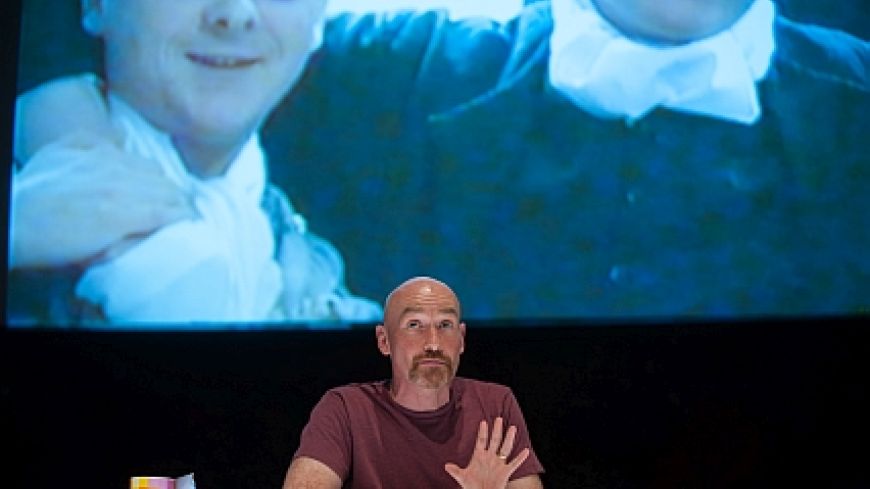
James Hogg’s 1824 novel Confessions of a Justified Sinner has been described as “stunningly duplicitous”. What then are we to make of a presentation on Paul Bright’s version for the stage?
This is part installation, part presentation as the theatre is entered through a meticulously curated exhibition documenting the 1980’s production. Cases are lined with ephemera; cine films, books, letters, photographs, posters.
And our guide is actor George Anton, who lived through it all. He leads us on an illustrated lecture expounding an almost lost chapter of a golden age of Glasgow theatre and its enfant terrible, Paul Bright who would disappear and die aged 47. We see video interviews with theatre practitioners describing Bright as, like Hogg, an original genius and a raw artist, innovative, tantalising, manipulative, a bully but very dynamic.
Bright was fascinated with the novel and would produce episodic parts of it over a number of years. Anton describes those heady days and shows archive footage.
For Bright only work matters, living through art and with an existential view of a meaningless world. He experiments in provoking the audience with Theatre of Cruelty and quotes Atruad in calling Anton “an athlete of the heart”.
Anton provides some insight on what it is to be an actor. How he became fascinated by it as a child, seeing what he saw as a process of telling lies and getting away with it. He describes that by necessity productions must be forgotten, actors move on to other jobs, new friends.
The now reconstructed performances might have been forgotten but for the arrival of a mysterious box after Bright’s death, the contents of which we are now picking through.
One of the commentators opines that we don’t go to the theatre to see a book, and indeed we don’t get Hogg’s book here. There is more; for by now the parallels are emerging - the lead character who thinks he can do anything, the found history from beyond the grave. An apparently unreliable, if very persuasive narrator. As the Sinner declines into despair and madness, only to flee his devils, so does Bright and we are left to consider the borders of reality and what has actually happened.
Anyone viewing the production at face value as a presentation is unlikely to find it satisfying. It also benefits from some knowledge of Scottish theatre and whether it translates for an International Festival audience only time will tell. The lovingly prepared “artefacts” on display are a major part of the piece and there should be a greater opportunity for the audience members to view them.
This clever, shape-shifting production is a multi-layered confession, laying out elements of the novel in a new way. It forms a love letter to theatre - what it was, is, and the directions it can be pushed.
Show Times: 19 to 22 August 2015 at 8pm.
Ticket Prices: £20
Suitability: Contains strong language.

